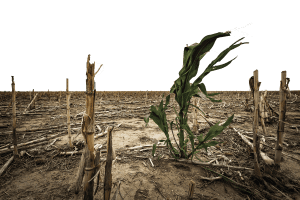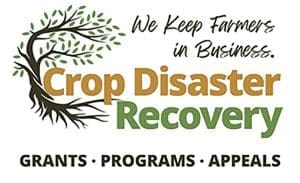By Burt Rutherford Contributing Editor

“The amount of money guys are leaving on the table is crazy,” says Kim Lott, CFO and co-founder of Crop Disaster Recovery. Indeed, there are lots of federal aid and disaster recovery money on the table for beef producers … if you know which table.
That’s the thing – knowing which USDA “table” has the money and navigating the complicated application process to get it. That’s where Crop Disaster Recovery can step in.
“We’re USDA consultants, and we’ve got a whole team of administrators, specialists, ag economists, and we want to provide a holistic approach to make sure that all sectors of ag get the money they should get from these programs,” Kim says.
She and her husband, David, started the business in 2021. Kim is an accountant and David is a seventh-generation rancher at Lake Placid, Fla., and a non-practicing attorney. They saw the impact of USDA disaster programs on keeping the ranch afloat in the aftermath of hurricanes that seem to target Florida, as well as the downward spiraling vortex that clients and neighbors experienced when they tried to crack the code of internal USDA workings.
Lest you think that USDA programs and the Lotts’ Crop Disaster Recovery efforts are for crop farmers only, think again, Kim says.
“There are all these different disaster aid programs and pandemic programs that these guys need to get signed up for,” she says. Some are direct payments, some are cost share.
“The cost-share programs are for infrastructure improvement as well,” David adds. Think Natural Resources Conservation Service (NRCS) programs for fencing, water improvements, etc.
Crop Disaster Recovery, as the name suggests, serves farmers. But the Lotts are seeing a growing number of cow-calf producers coming to them for help. The past few years have been tough, with many beef producers fighting drought, wildfires and other natural disasters.
“This really should be part of any cattle operation’s risk management approach,” Kim says. Beef producers are likely aware of CSP and EQIP, which are major conservation programs, and even NRCS cost-share programs. “But there are so many smaller programs that people often don’t even know exist,” Kim says. “The reality is, guys should be working these programs and they’re not, and nobody’s getting the amount of money they should.”
Many of the USDA programs are retroactive, Kim says. So, while a beef producer may be focused on the wildfire or drought or flooding or other natural disaster they’re battling today, they may be eligible for disaster recovery assistance from losses they suffered several years ago.
“If you come to us tomorrow with a disaster that’s ongoing or happened yesterday, it might take us a while to get you any payment,” David says. “But you might be eligible for some money from two years ago that you’ve already forgotten about.”
That’s because USDA works retroactively. “You’re focused on today’s emergency. But those [prior] programs might be open and we can get you some money pretty quickly to start recovering from your immediate disaster,” David says. “Then you actually get paid for your immediate disaster a year and a half, two years later, sometimes.”
So, Kim advises, regardless of your present situation, get into their rotation. “That’s how the programs are designed [to pay retroactively]. That’s how they should be utilized. So guys need to come to us sooner than later, because they could be leaving several hundred thousand dollars on the table and not know it.”

Unlike crop disaster payments, which are usually once or twice a year, livestock payments are spread out. “What we’ve seen with our own cow-calf operation, we get paid three, four, five, six times a year because that’s how these programs are intended to be worked,” Kim says.
Remember that old joke about “I’m from the government and I’m here to help?” Many USDA employees feel that they are, indeed, there to help. But often, agencies are understaffed and the employees aren’t familiar with the fine print on all the regulations and programs. And that means things can happen.
“And then, when things go wrong because they often do, the agencies will come back for audits and may send a demand-for-repayment letter,” Kim adds. “We’ve had clients come to us with these demand-for-repayment letters and it made sense for us to represent them. We know what flies, what the judges do and don’t like, and we can provide that entire approach where we’re the client’s representative with the agencies. We take all the headache and hassles and worry away.”
The company works on a flat 15 percent contingency. “And so, our biggest concern is when you’re a client, we want to get you signed up for everything because we charge on a contingency,” David says. “We’ve got a dog in your fight.”
However, Kim adds, “We’re going to ask for a lot of information because we’re looking for the best way to get somebody paid the most profitable way.” If you’re reluctant to turn over your records to USDA, then Crop Disaster Recovery’s hands are tied as far as finding programs to help out.
The attitude that “The government has no business knowing my business” is changing, David says. “Over the past couple of years, it’s been rough on some folks, especially coming through the pandemic. At this point, people need help and they’re willing to get it where they can get it. We’ve seen a big shift in that attitude.”
Kim agrees. “As these markets fluctuate, people have become much more open to, ‘Yeah, if there’s money out there, at least let me get my tax money back,’” she explains. “That’s the intention of these programs. They’re there to strengthen ag so that our food supply stays stable and we can continue to grow our own food in this country. The local food supply and independent producers are something we feel strongly need to be protected.”






